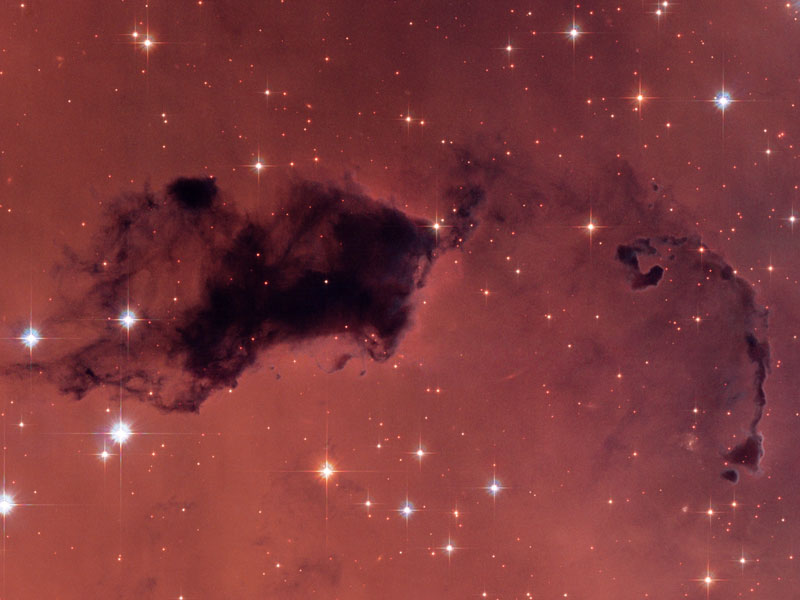
|
Explanation: Stars themselves can create huge and intricate dust sculptures from the dense and dark molecular clouds from which they are born. The tools the stars use to carve their detailed works are high energy light and fast stellar winds. The heat they generate evaporates the dark molecular dust as well as causing ambient hydrogen gas to disperse and glow red. Pictured above, a new open cluster of stars designated IC 1590 is nearing completion around the intricate interstellar mountain named NGC 281. The dust cloud NGC 281, dubbed the Pacman nebula because of its overall shape, is classified as a dense Bok Globule that lies about 10,000 light years distant.
|
January February March April May June July August September October November December |
| ||||||||||||||||||||||||||||||||||||||||||||||||
NASA Web Site Statements, Warnings, and Disclaimers
NASA Official: Jay Norris. Specific rights apply.
A service of: LHEA at NASA / GSFC
& Michigan Tech. U.
Based on Astronomy Picture
Of the Day
Publications with keywords: dust cloud - NGC 281 - bok globule
Publications with words: dust cloud - NGC 281 - bok globule
See also:
- APOD: 2025 March 26 Á Star Formation in the Pacman Nebula
- APOD: 2024 November 18 Á Stars and Dust in the Pacman Nebula
- APOD: 2024 September 24 Á NGC 6727: The Rampaging Baboon Nebula
- APOD: 2023 August 28 Á Star Formation in the Pacman Nebula
- Galactic Cirrus: Mandel Wilson 9
- Stars and Dust across Corona Australis
- Dust Clouds of the Pacman Nebula
